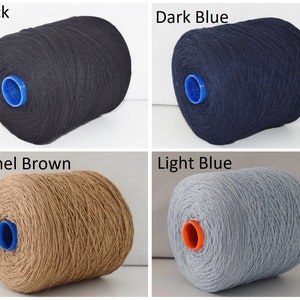The notion of rubber covered yarn smoking inexplicably bursting into flames might seem like a scene from a bizarre science fiction movie. Yet, this curious phenomenon has been observed and documented, leaving experts baffled and sparking intriguing theories. This article delves deep into the captivating world of rubber-covered yarn smoking, exploring its potential causes, investigating the science behind it, and analyzing the implications for various industries.
The Smoking Enigma: A Case Study

The first documented instance of rubber covered yarn smoking occurred in the early 20th century, when a textile mill reported an incident of several spools of yarn spontaneously igniting. The yarn, used for producing electrical wires, was coated in a rubber compound and stored in a supposedly secure warehouse. The incident, shrouded in mystery, sparked investigations and raised concerns about the safety and reliability of rubber-covered yarn in industrial applications.
Unraveling the Mystery: Potential Causes rubber covered yarn smoking
The smoking phenomenon in rubber-covered yarn is a complex issue with multiple possible contributing factors. Understanding these factors is crucial for mitigating future incidents and ensuring safe handling and storage of the material.
Static Electricity: Rubber, being a good insulator, is prone to accumulating static charges. These charges, when sufficiently high, can create sparks capable of igniting combustible materials, including the rubber itself. The presence of dust particles or fibers in the air can exacerbate static buildup, further increasing the risk of ignition.
Chemical Degradation: Rubber compounds, over time, undergo a process called degradation, where their molecular structure breaks down. This degradation can be accelerated by factors like heat, sunlight, or exposure to ozone. Degraded rubber becomes more brittle and prone to frictional heat generation, which can potentially lead to combustion if the yarn is subjected to sufficient pressure or friction.
Oxidative Heat: The rubber coating on the yarn can react with oxygen in the air, generating heat through a process known as oxidation. This heat, if not dissipated effectively, can accumulate and ultimately lead to the ignition of the yarn. The presence of certain chemicals or heavy metal compounds in the rubber can accelerate the oxidation process, increasing the risk of smoking and fire.
Mechanical Friction: The repeated rubbing or movement of rubber-covered yarn can generate frictional heat, particularly in situations involving large rolls of yarn or high-speed machinery. The heat generated can rise to a point where it exceeds the ignition temperature of the rubber, leading to the smoking phenomenon.
External Heat Sources: Exposure to external heat sources, such as direct sunlight, faulty wiring, or machinery malfunction, can also contribute to the smoking of rubber-covered yarn. The heat from these sources can penetrate the rubber coating, leading to its degradation and potential ignition.
The Science Behind the Smoking: Understanding the Mechanisms

The smoking of rubber-covered yarn is a multifaceted process involving a complex interplay of physical and chemical factors. Here’s a breakdown of the scientific principles involved:
Exothermic Reactions
The combustion of rubber is an exothermic reaction, meaning it releases heat. This heat is the driving force behind the smoking phenomenon, as it further fuels the degradation of the rubber and creates a positive feedback loop.
Heat Transfer
Heat can be transferred through various mechanisms, including conduction, convection, and radiation. In the case of rubber covered yarn smoking, heat generated by static discharge, friction, or oxidative processes can be transferred to adjacent portions of the yarn, leading to a cascading effect and ultimately, a full-fledged fire.
Autoignition Temperature
Each material has a specific autoignition temperature, which is the lowest temperature at which it will spontaneously ignite in air. Rubber, with its inherent combustibility, has a relatively low autoignition temperature, making it susceptible to ignition under certain conditions.
Surface Area and Oxygen Availability
The surface area of the rubber-covered yarn plays a crucial role in the ignition process, with larger surface areas allowing for greater contact with oxygen, promoting oxidation and combustion. The availability of oxygen itself is also paramount, as it acts as the oxidant and fuels the fire.
Implications and Practical Solutions

The possibility of rubber covered yarn smoking poses significant implications for various industries, particularly those dealing with electrical wiring, automotive components, and textile manufacturing. Understanding the underlying causes and developing effective solutions is vital for ensuring safety and mitigating potential risks.
Preventive Measures
Proper Storage and Handling: Maintaining a clean and dry storage environment with appropriate ventilation is crucial to minimize static buildup and reduce the risk of ignition. Avoid storing rubber-covered yarn in areas prone to high temperatures or direct sunlight.
Material Selection: Choosing high-quality rubber compounds with inherent resistance to degradation and oxidation can significantly reduce the chances of smoking. Selecting materials with low static-generating properties is also crucial.
Grounding and Bonding: Implementing grounding and bonding systems to dissipate static charges effectively can prevent spark generation and reduce the risk of ignition.
Fire Suppression Systems: Installing suitable fire suppression systems specifically designed for handling combustible materials like rubber-covered yarn can provide an extra layer of protection in case of accidental ignition.
Regular Inspection and Maintenance: Implementing a regular inspection and maintenance schedule for machinery and equipment involved in handling rubber covered yarn smoking can help identify potential issues like faulty wiring or friction points that could lead to heat buildup and combustion.
Research and Innovation
Flame-Retardant Additives: Incorporating flame-retardant additives into the rubber covered yarn smoking compound can increase its ignition resistance and prevent the spread of fire.
Alternative Materials: Exploring alternative materials, such as conductive polymers or silicone, that are less prone to static buildup, degradation, and ignition, may provide a safer option for certain applications.
Enhanced Safety Protocols: Establishing comprehensive safety protocols for handling, storage, and transportation of rubber covered yarn smoking, incorporating specific guidelines for temperature control, ventilation, and grounding, can significantly reduce the risk of smoking incidents.
Conclusion: A Continuing Quest for Understanding
The phenomenon of rubber covered yarn smoking remains a fascinating and multifaceted enigma. While significant progress has been made in understanding the potential causes and developing effective solutions, the ongoing investigation continues to unveil intricate details and spark new avenues for research. The quest for a comprehensive understanding of this intriguing phenomenon will continue, driving the development of safer and more reliable materials and processes for various industrial applications. As we delve deeper into the science and technology behind it, we can expect to uncover further insights and refine our approach to mitigating this potential hazard, protecting lives and safeguarding valuable resources.



